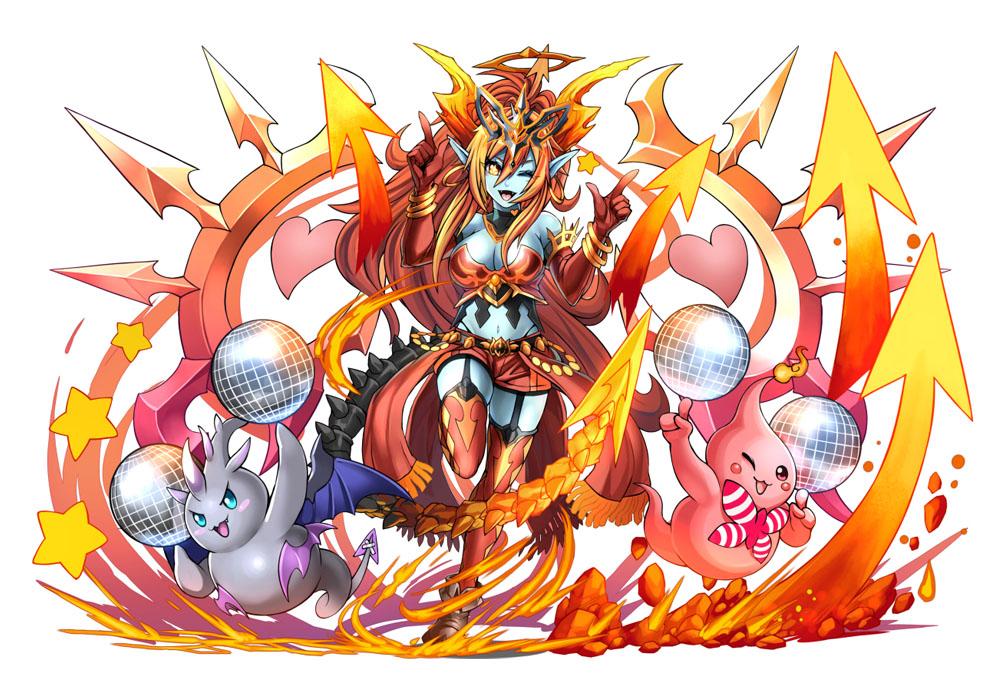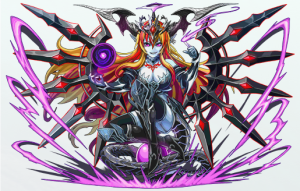I originally had a good chunk of this text as the intro to my upcoming Terra Battle article, but it became so long-winded that I felt it’d be better off as its own bit. It occurred to me that rather than front-loading a piece that’s supposedly dedicated to a specific game with way too much text justifying covering free-to-play games, I should make it its own little editorial. After all, free editorial is part of the reason I started Gaming.Moe to begin with.
I get the feeling some folks might scoff at me choosing to write at length about free-to-play games. Depending on who you talk to, the reaction to saying “hey, I’m playing a cool F2P game!” ranges from indifference (oh, a F2P game? that’s nice.) to disbelief (you’re wasting your time on that casual crap?) to SEARING INDIGNANT RAGE (HOW DARE YOU SUPPORT THE F2P CANCER THAT’S KILLING GAMING!). There’s a very obvious stigma against F2P, and F2P mobile games in particular, as being cobbled-together, asset-recycling garbage out to fleece their high-rolling “whales” out of stacks of funbucks. A quick look at the app store on any given day will no doubt reinforce this idea.
(I can hear a few of you shouting BUT WHAT ABOUT LEAGUE OF LEGENDS HEIDI , THAT’S F2P AND REALLY HUGE! I’ll say that it’s a unique case that – much to Patrick Miller’s chagrin – I don’t really know enough about. One thing I have noticed so far, however, is that you tend to either LOVE and be totally into LoL and its culture or you’re just kinda uneasily observing the whole thing.)
But even among the giant tidal wave of absolutely irredeemable F2P trash, there are things worth talking about – particularly so because there are very storied creators now trying their hand at the format. In particular, mobile and smartphone gaming is a big deal in Japan, and has been for quite some time. What’s really driven a lot of big name people in the JP games biz to want to create for smartphone gaming, however, has been the runaway success of Puzzle and Dragons.
I really like Hera. Can you tell?
PaD (or PazuDora for max weeaboo cred) has been making something in the realm of a few million dollars each day for developer GungHo. It’s a paradigm changer much in the same way the PSP Monster Hunter games were, giving consumers a new set of expectations from everything that came afterwards. Here was a game that made you feel welcome and engaged off the bat, that didn’t constantly pester you to bother friends for bonuses, and that gave out valuable rewards just because the devs wanted you to feel good. It still had typical F2P trappings like stamina to limit playtime and random paid pulls, but the game didn’t feel like it was demanding an absurd amount of money and time to get enjoyment from it. (I’ll link here to Andrew Vestal’s analysis of the game that details just why its type of F2P works so well.)
It also did a good job of eliminating part of the “casual” stigma that surrounds these titles. While it’s still very possible to play PaD without spending a dime on extras, just enjoying clearing some of the standard and bonus dungeons, there’s an incredible amount of strategy that comes from having a varied roster of gods and monsters. I liken it to a traditional collectible card game – building a team to tackle the game’s harder challenges is very much akin to assembling a deck. You not only have to consider strength of individual cards, but how well cards work with and play off each other – as you do with forming effective PaD monster squads. You also have to figure out ways to reduce the effects of randomness: card draws in a CCG and the orb board in PaD. It’s something you can really invest a lot of thought, time, and – most importantly to a business – money into.
(On this note, I have the theory that a lot of “hardcore gamers” actually do enjoy F2P mobile stuff, but don’t openly talk about it due to the stigma that it’s “casual” and/or “evil,” which is a subject for another article entirely. Though PaD has changed this… albeit slightly.)
With PaD transforming the perception of F2P mobile games from exploitative comp-gacha money sinks into something more respectable – and forcing many companies to reconsider how they approach F2P – more big-name game creators have jumped on the bandwagon. Among these are Final Fantasy creator Hironobu Sakaguchi (Terra Battle), Sega’s Masayoshi Kikuchi (Demon Tribe, which sadly died before I could try it – a danger of the format in its current state), and 80s-90s Capcom design legend Yoshiki Okamoto (Monster Strike). These are all people of incredible pedigree trying something in a format that is still relatively immature, and that, I think, should be more than sufficient to spur our interest.
“But Heidi!” you say. “If they’re working on mobile games, then they aren’t working on big console AAA games!” Perhaps this is the case, but I think many of us have realized by this point that the platform or its power relative to others really doesn’t mean as much as the quality of the game design. In many cases, having restrictions has in turn lead to ingenious game design, while having total creative freedom and few boundaries has lead to absolute disasters.
So why do I want to look at these F2P games? Because they represent something new and growing in gaming. Yes, there are a lot of ugly sides to the F2P format, and we all should call them out when we see them so it can grow better. But it’s not a business model I personally want to dismiss outright – rather, I want to see it grow and transform into something that can be great for both players and creators. I’ve already seen some very good uses of it (I hope more fighting games embrace the format, because I’d much rather just buy characters I want to play), and I feel like eventually we’ll reach a point where a game employing some sort of F2P model won’t be a brand of casual shame.
Of course, there’s the physical versus digital thing, too, but that’s another can of worms…



Great article, I actually work in the F2P gaming industry (marketing & advertising) and although I lack tangible experience/knowledge regarding the Japanese F2P mobile market, I have a pretty good idea of it based on the western model and I would completely agree with the points you made above.
With touch controls not being the most tactical & responsive for more complicated genres such as FPS’s, 3D action & fighting games, mobile isn’t the platform of choice for the typical self confessed ‘core gamer’ and that probably also adds to the hate for mobile F2P games. However, the increase of recognised ‘AAA’ developers/creators moving over to the F2P market (Cliffy B, Factor5 >TouchFactor etc) in addition to more and more F2P games on consoles (DCUO, Warframe, Tekken Revolution etc) has definitely helped however.
Thanks for the feedback! What you say about touch controls definitely holds true in those cases, but there are also genres in which they work beautifully – menu-driven strategy games, RTSes, building/development simulations. All genres that can have a “hardcore” slant to them.
Oh absolutely, I think I’m the only one who believes that ‘bullet hell’ shooters are actually better using touch controls (Phoenix HD on iOS is a great example of this) as are the genres that you mentioned.
Just wanted to offer thanks for alerting me to the existence of Phoenix HD :3
You’re not the only one! Touch is the only way I can play bullet hell games. And it’s my wife’s preferred interface, even though she can also handle a controller. Pity there aren’t more developers that have realized what a beautiful marriage touch and bullet hell are. At least Cave has most of their backlog on mobile now, including a mobile-only installment of DoDonPachi.
It’s a shame that Cave decided to abandon the English mobile market 🙁 At least there’s a nice backlog of their stuff still out there.
One major piece of news you might have missed is the return of Brian Reynolds today and Big huge games under the F2P model with Nexon moneyhatting it. For folks who like strategy games that’s a pretty big deal- he was big part of the Civ series, and BHG went down due to the whole 38 Studios fiasco.
As for the article, my fundamental disagreement with F2P is when a game is really good.
In the traditional model: a great game might provide $200-300 worth of value. With the traditional model you pay once (or more for expansions), a set cost, and you win.
With F2P, you have to keep paying- eventually you get less and less return on your money, it’s harder to feel satisfied. Diminishing marginal returns and all that (economics talk) If you have a compulsive personality where you want everything a game has to offer (and I have this personality, and I suspect many other gamers do as well), it’s easy to end up overspending.
I do like the idea of dual-track F2P/paid option, such as what DOA5U used, and I think it would be great for certain fighting games. A traditional model would be hell for tournaments, because that’s a lot of DLC, and we’ve seen issues with Killer Instinct already at some tournaments. I’m sure that can be worked out, but it makes me skeptical of the model unless it’s proven to work for fighters, but I’m unsure out Xuan Dao Zhi Wang (that Chinese KOF clone with Terry and Benimaru) has worked out. It’s a game that looked interesting though.
What you say about needing to keep paying for F2P – I dunno, I kinda like the idea that if a game keeps entertaining me, I can continue to support its creators. A lot of F2P stuff has new content coming out pretty regularly, which helps keep people employed, too. Considering how AAA development typically dumps chunks of teams out on the streets after a project and pre-planned DLC has wrapped, that’s a positive as well.